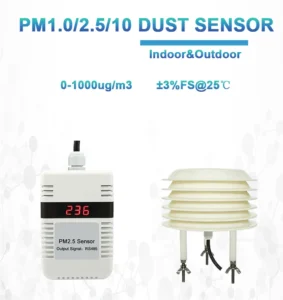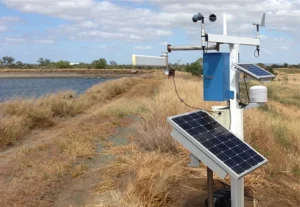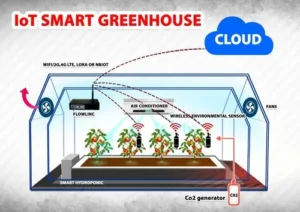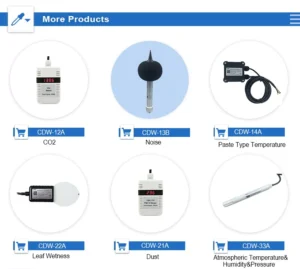Application and Importance of Anemometers and Wind Vanes
**I. Introduction**
Anemometers and wind vanes are key tools in studying the weather. They are used in many fields, like aviation, navigation, environmental studies, and wind energy development. With new technology, ultrasonic anemometers and wind vane sensors are now important in weather observations.
These modern devices give precise readings of wind speed and direction. They also fix the problems of older mechanical options. This article looks at the importance and uses of anemometers and wind vanes, especially the ultrasonic ones.
**II. Primary Roles of Anemometers and Wind Vanes**
Anemometers and wind vanes are used to measure how fast the wind blows and which way it goes. Wind speed tells us how fast the air is moving. The wind direction tells us where the wind comes from.
This data is important for many fields. These tasks include looking at the weather, predicting the climate, managing the environment, and keeping aviation safe. The specific uses are listed below:
1. **Meteorological Observation and Weather Forecasting**
– **Real-time Data Collection**: Wind speed and direction are key to understanding weather. Wind patterns change, and this directly affects the weather. Anemometers and wind vanes give real-time data to weather stations. This helps us predict the weather and make climate models.
– **Constructing Climate Models**: Collecting wind data over a long time helps researchers study and predict climate change trends better.
2. **Aviation Safety and Flight Path Planning**
– **Ensuring Flight Safety**: Accurate wind data is very important in aviation. It helps make sure takeoffs and landings are safe.
Anemometers and wind vanes help airlines run better. They change flight paths and speeds based on the current wind conditions. This reduces risks during air travel.
– **Optimizing Flight Routes**: Reliable wind measurements help improve fuel efficiency. They also help create smoother and more economical flights by allowing better route planning.
3. **Wind Energy Development**
– **Site Assessment**: Wind power is a vital source of renewable energy. Wind speed measurements from anemometers are essential. They help find the best places for wind farms. They also help design systems and check how efficient power generation projects can be.
– **Enhancing Efficiency**: Checking wind data often helps change the turbine’s direction and speed. We can boost energy output this way.
4. **Urban Planning and Environmental Regulation**
– **Urban Layout Optimization**: Knowing local wind patterns helps city planners create better designs for buildings and open areas. This leads to improved airflow, better air quality, and enhanced living conditions in cities.
– **Pollution Control**: Wind direction and speed measurements help model how pollutants spread. This information helps make plans to reduce pollution levels effectively.
III. Benefits of Ultrasonic Anemometer and Wind Vane Sensors
Conventional anemometers and wind vanes typically rely on mechanical components. They have spinning blades or wind wheels. These tools measure how fast the wind blows and which way it goes. They use methods based on friction or magnets to do this.
Traditional techniques can wear down over time. They can also be affected by outside factors. This can change how accurate and reliable the measurements are.
Ultrasonic anemometers and wind vane sensors use sound waves to measure how fast the wind blows and which way it goes. They offer many unique benefits.
1.Accuracy and Consistency
– Non-contact Technology: Ultrasonic anemometers and wind vane sensors measure wind speed and direction without touching anything. Their few moving parts lower friction and wear. This helps keep performance steady and accurate over time.
2. Real-time Monitoring
– Quick Response Time: Ultrasonic sensors work faster than regular devices. They also gather data all the time. This feature helps us predict the weather and watch it as it happens.
3. Resilience in Extreme Conditions
– Environmental Robustness: Ultrasonic sensors use a non-contact measurement technique. This makes it less likely for them to get damaged. They can do well in tough conditions like high humidity, extreme heat, and snow. This reliability makes their readings more accurate, even in tough environmental conditions.
4. Multi-functionality with Simplified Maintenance
– Comprehensive Monitoring: These sensors check how fast the wind blows and which way it goes. They can also check the temperature and humidity. This gives them useful features.
– Easy Maintenance: Without complex moving parts, maintenance is simpler. This lowers both labor costs and effort.
IV. Applications of Ultrasonic Anemometer and Wind Vane Sensors
Ultrasonic anemometer and wind vane sensors are widely used across various industries, highlighting their pivotal contributions in numerous fields.
1. Meteorological Studies
– Accurate Data Collection: These sensors give precise, real-time data on wind speed and direction. They are important tools for weather stations and satellite ground stations that gather weather data.
2. Aviation and Marine Safety
– Improved Transport Safety: Accurate wind measurements are important. They help plan flight paths and guide ships. These sensors help keep people safe by giving accurate data in real time. This information helps leaders lower risks in their work.
3. Wind Energy Sector
– Resource Evaluation: Accurate assessments of wind resources are key for planning wind energy projects. Ultrasonic sensors help find the best places for wind farms. This improves productivity and makes wind power more cost-effective.
4. Environmental Monitoring
– Improved Air Quality Analysis: As cities grow, it is more important to monitor air quality. Ultrasonic sensors help track local wind patterns. This information helps us see how pollution spreads. It also helps make better plans for protecting the city environment.
Conclusion
Anemometers and wind vanes are useful tools. They are used in many fields, such as weather forecasting, aviation safety, renewable energy, and environmental management. These tools have changed from simple designs to advanced ultrasonic versions.
Ultrasonic anemometer and wind vane sensors have many benefits. They provide precise measurements without contact. They are also very stable and can work in tough conditions. These features make them the best choice for weather monitoring systems.
As new advancements lead to more innovation, these tools will keep playing an important role. They help science move forward, protect nature, and support society in reaching new goals.














